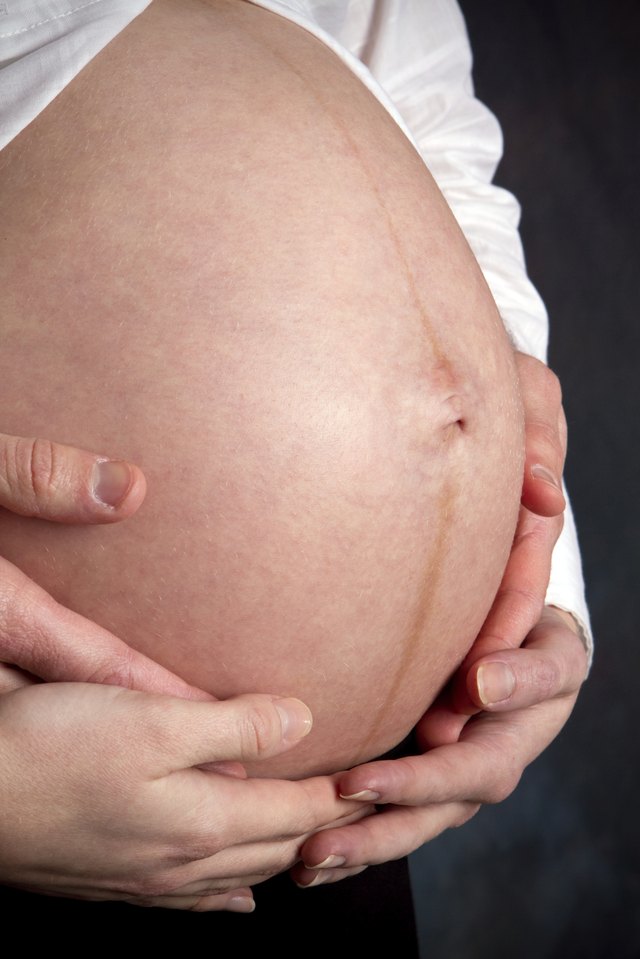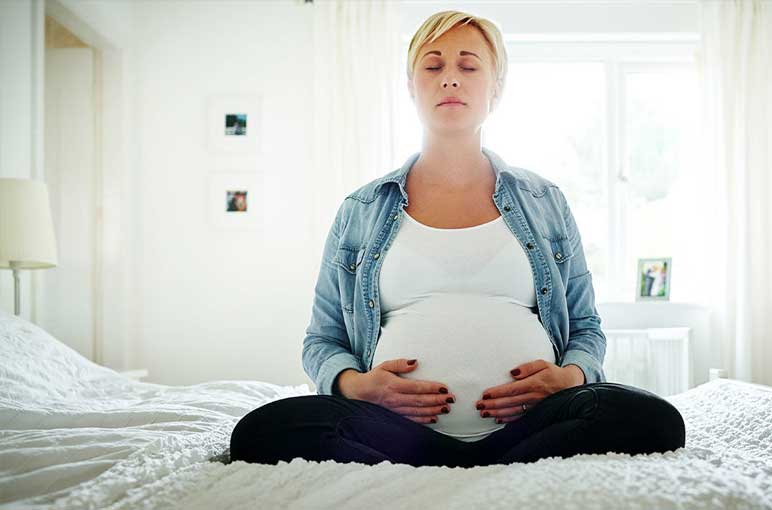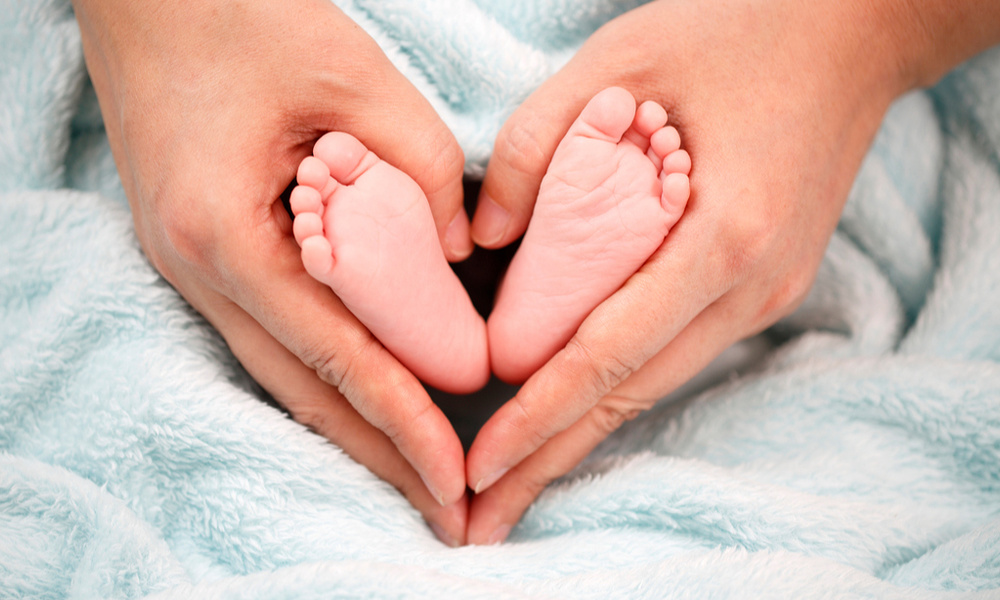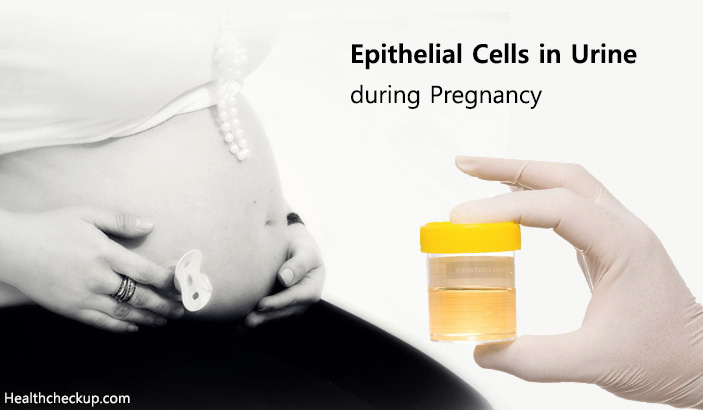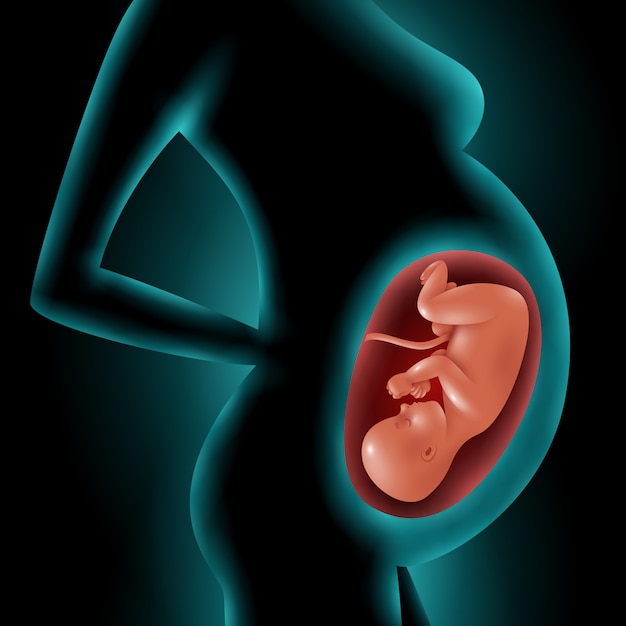Dark pigmentation during pregnancy
Changes to your skin during pregnancy
beginning of content3-minute read
Listen
As your pregnancy develops, you may find that you experience changes to your skin and hair. Some women can develop dark patches on their face and hormonal changes can make your skin a little darker.
You may also develop stretch marks on your body, particularly around your stomach where your skin is stretching to accommodate your growing baby.
Chloasma - dark patches on the face
Some pregnant women develop dark irregular patches on their face most commonly on the upper cheek, nose, lips, and forehead. This is called 'chloasma'. It is also sometimes known as 'melasma' or the 'mask of pregnancy'.
Chloasma is thought to be due to stimulation of pigment-producing cells by female sex hormones so that they produce more melanin pigments (dark coloured pigments) when the skin is exposed to sun. Some women develop these patches when they take oral contraceptives (the pill).
Women with a light brown skin type who are living in regions with intense sun exposure are more likely to develop these patches. The patches usually fade over a period of several months after giving birth, though they may last for several years for some women.
Careful protection of the skin using broad spectrum sunscreens every day during pregnancy and while taking the pill may make it less likely that chloasma will develop. It is necessary to continue to use sunscreen after pregnancy as sun exposure may cause the patches to reappear. Some creams that need to be prescribed by doctors may help to fade the patches.
Skin and hair changes
Hormonal changes taking place in pregnancy will make your nipples and the area around them go darker. Your skin colour may also darken a little, either in patches or all over. Birthmarks, moles and freckles may also darken. Some women develop a dark line down the middle of their stomach, called 'linea nigra'. These changes will gradually fade after the baby is born, although your nipples may remain a little darker.
These changes will gradually fade after the baby is born, although your nipples may remain a little darker.
If you sunbathe while you are pregnant, you may burn more easily. Protect your skin with a good high-factor sunscreen and don't stay in the sun for a long time.
Hair growth can also increase in pregnancy, and your hair may be greasier. After the baby is born, it may seem as if you are losing a lot of hair but you are simply losing the extra hair.
Stretch marks
Many women develop stretch marks during their pregnancy, usually in the last 3 months.
They usually appear on your stomach or sometimes on your upper thighs or breasts. Stretch marks are not harmful and over time, your skin will shrink and the stretch marks will fade into white-coloured scars.
Find out more on stretch marks.
Sources:
Royal Women's Hospital Victoria (Common concerns in early pregnancy - itching and skin), The Australasian College of Dermatologists (Striae), The Australasian College of Dermatologists (Melasma)Learn more here about the development and quality assurance of healthdirect content.
Last reviewed: January 2020
Back To Top
Related pages
- Common discomforts during pregnancy
- Stretch marks
This information is for your general information and use only and is not intended to be used as medical advice and should not be used to diagnose, treat, cure or prevent any medical condition, nor should it be used for therapeutic purposes.
The information is not a substitute for independent professional advice and should not be used as an alternative to professional health care. If you have a particular medical problem, please consult a healthcare professional.
Except as permitted under the Copyright Act 1968, this publication or any part of it may not be reproduced, altered, adapted, stored and/or distributed in any form or by any means without the prior written permission of Healthdirect Australia.
Support this browser is being discontinued for Pregnancy, Birth and Baby
Support for this browser is being discontinued for this site
- Internet Explorer 11 and lower
We currently support Microsoft Edge, Chrome, Firefox and Safari. For more information, please visit the links below:
- Chrome by Google
- Firefox by Mozilla
- Microsoft Edge
- Safari by Apple
You are welcome to continue browsing this site with this browser. Some features, tools or interaction may not work correctly.
Melasma in Pregnancy: Treatment and Causes
Your body goes through tremendous changes during pregnancy.
Your belly gets larger and your blood volume increases as your baby grows. You may experience cramping, morning sickness, and all sorts of unfamiliar aches and pains. Your hair and skin may also go through a transformation for the better — or worse. (You’re beautiful all the same.)
(You’re beautiful all the same.)
If you’ve noticed dark patches of skin on your face, you may have melasma. Here’s more about this condition, why it crops up in pregnancy, and how you can treat it safely.
Melasma is a skin disorder where the melanocytes (color-producing cells) in your skin produce extra pigment for some reason. In pregnancy, it’s often referred to as chloasma, or the “mask of pregnancy.”
Chloasma is a cosmetic concern. It doesn’t affect your baby in any way or indicate any other pregnancy complications.
People with more pigment in their skin — for example, those of African, North African, Middle Eastern, Latin or Hispanic, Asian, Indian, or Mediterranean descent — are more likely to develop chloasma, as they naturally have more active melanin production.
Overall, between 50 and 70 percent of people will develop some form of melasma during pregnancy.
Related: Skin color needs to be factored in when discussing skin diseases
The primary symptom of chloasma is darkening of the skin on the face. You may notice dark patches or splotches on your forehead, cheeks, chin, or around your mouth. These areas may get darker the more you’re exposed to the sun or the further along you are in your pregnancy.
You may notice dark patches or splotches on your forehead, cheeks, chin, or around your mouth. These areas may get darker the more you’re exposed to the sun or the further along you are in your pregnancy.
Pain, itchiness, or soreness are not symptoms of melasma. If you experience these signs or develop severe irritation, you may be dealing with another condition. Bring up any additional symptoms you have with your doctor.
A dermatologist can accurately diagnose your condition using a Wood’s lamp, which helps show whether a skin condition is bacterial, fungal, or otherwise concerning.
Skin hyperpigmentation during pregnancy is very common. You may notice your nipples/areolas, armpits, or genitals become darker. You may see a line (linea nigra) extending from the pubic area over the belly, or darkening of the skin all over the body.
Changing hormones, particularly the excess of estrogen and progesterone, is the main cause of melasma during pregnancy. Beyond that, the dark patches on the face can be exacerbated by sun exposure, the use of certain skin care products or treatments, and even genetics.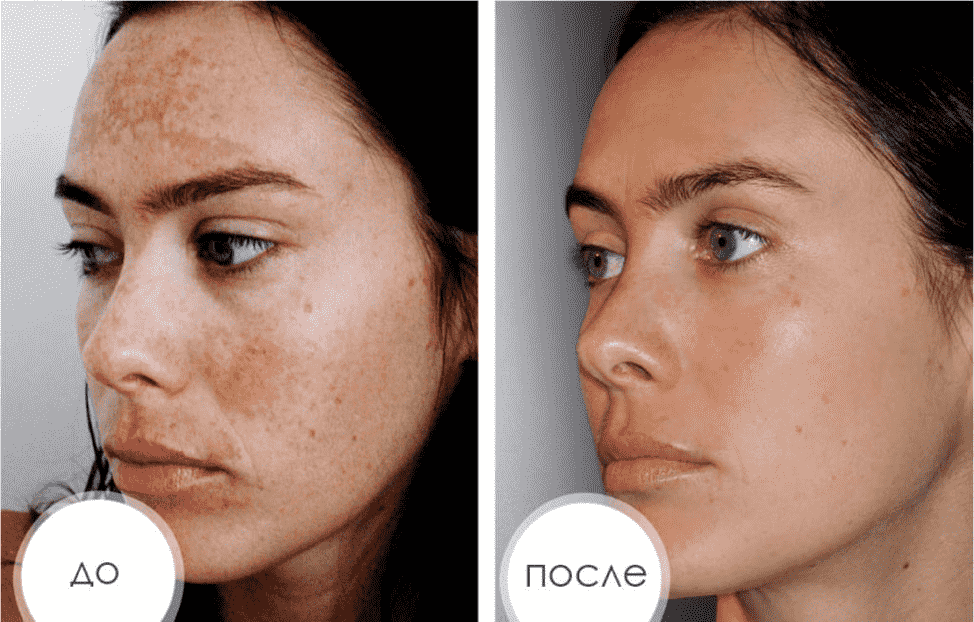
Chloasma may also be worsened by hormonal imbalances that may have been present even before pregnancy.
Whatever the case, your melanocyte-stimulating hormones react to these triggers by making an excess of protective pigments (dark patches) on the skin called melanin.
Melasma may start at any point in your pregnancy, though it most commonly begins in the second or third trimester.
Again, there are a variety of factors at play when it comes to darkening pigment. Your skin color and type may make this condition more or less noticeable. How much you’re out in the sun or even the time of year when you’re pregnant may also affect when you first notice it.
The good news is that this hyperpigmentation likely won’t get worse after you deliver your child. That said, it may take time — possibly months — for it to completely fade without any targeted treatment.
Speak with your doctor about ways to treat your melasma during pregnancy. Your doctor may refer you to a dermatologist for more information.
Some experts don’t recommend treating melasma during pregnancy. One reason is that it may resolve on its own. And some treatment methods may not be safe or effective to use when pregnant.
The best course of treatment may actually be prevention, with the help of a few lifestyle changes.
Seek shade
Since the sun may trigger the development of more pigment, it’s a good idea to stay out of its rays, especially for long periods of time.
Yes, this also applies to tanning beds or any other environment where you would be exposed to UVA and UVB rays. Limit sunbathing and try relaxing under a tree or umbrella instead.
If you’re exercising, try avoiding peak sun hours in your area, generally the middle of the day. Head out early in the morning or later in the evening when the sun is low.
Wear sunscreen
This doesn’t mean you have to stay indoors when the sun is out, though. Wearing a good pregnancy-safe sunscreen with SPF 30+ is key.
Look for products that contain zinc oxide, titanium dioxide, or other physical blockers (mineral sunscreens) versus those that rely on chemical blockers.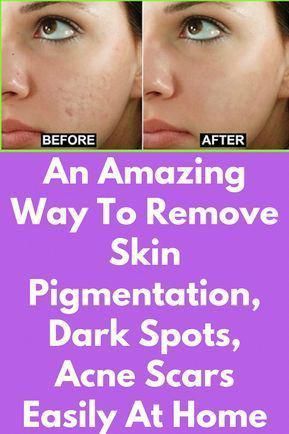 Physical blocking sunscreens tend to offer broader protection and may be less irritating to the skin.
Physical blocking sunscreens tend to offer broader protection and may be less irritating to the skin.
Dress for success
Another option for sun cover is clothing with or without UV protection, such as SPF rash guards or sun protective clothing. Even if it’s hot outside, loose-fitting clothing can be comfortable and protect your skin.
What about the face? Wide brimmed hats are your best friend. And don’t forget a stylish pair of sunglasses — the bigger the better.
Use gentle skin care products
Face washes, lotions, and serums that irritate your skin may make melasma worse. Slather up with gentle products instead. Look on the label for words like “noncomedogenic,” “sensitive,” “fragrance-free,” or “dermatologist approved” if you get overwhelmed in the beauty aisle.
The same goes for makeup you may use to conceal the dark areas. Look for noncomedogenic or hypoallergenic foundations, concealers, powders, and other products.
Related: Your guide to pregnancy-safe skin care
Try at-home masks and methods
You may be able to lighten your melasma using ingredients from your pantry. While there are no specific studies on these methods for chloasma, the following topical treatments may help:
While there are no specific studies on these methods for chloasma, the following topical treatments may help:
- Lemon juice. Mix together a solution of half fresh lemon juice and half cucumber juice or water. The acid in the juice may help remove pigmentation in the top layer of the skin.
- Apple cider vinegar (ACV). Similar idea here. Mix a solution of half ACV and half water to use as a toner on dark areas.
- Milk of magnesia. After washing your face, apply milk of magnesia to dark areas using a cotton ball. Leave on the skin overnight and wash off in the morning.
- Oatmeal and honey. Whip up a mask made with cooked oatmeal (let it cool down so it isn’t hot) and raw honey. Leave on the skin for 10 minutes before washing away. The mask helps to exfoliate your skin and the enzymes in the honey may lighten it a bit.
Eat well, rest, and try a few supplements
Since melasma may also be the result of hormonal imbalances, you may improve matters by giving yourself some much-needed TLC.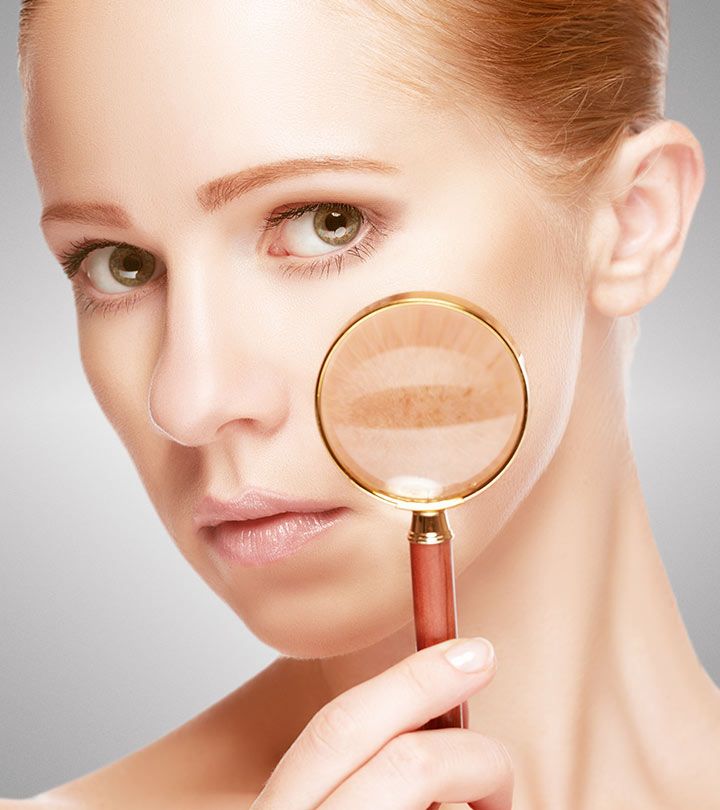 Make sure you’re staying hydrated, eating a diet with plenty of fresh fruits and vegetables, and getting enough sleep each night.
Make sure you’re staying hydrated, eating a diet with plenty of fresh fruits and vegetables, and getting enough sleep each night.
Be sure that you’re rounding out your diet by consuming supplemental omega-3 fatty acids. And ask your doctor about any potential vitamin deficiencies. Some studies link melasma to deficiency in iron and possibly vitamin B12.
Be patient
After pregnancy, you may ask your dermatologist about other treatments if your melasma doesn’t fade on its own. Treatments include topical medications like:
- hydroquinone
- tretinoin
- corticosteroids
Your doctor may also recommend certain acids that lighten the skin, alone or in combination. There are also some procedures — including chemical peels, microdermabrasion, laser treatments, and other light therapies — that may work.
It can be frustrating to deal with changes to your skin during pregnancy. Fortunately, chloasma generally fades within a few months after giving birth.
There are various lifestyle changes you can try to prevent the condition from progressing during pregnancy. Otherwise, speak with your doctor about the options for treatment and the benefits and risks of each. You’ll be glowing again before you know it!
Changes in the skin during pregnancy - St. Petersburg State Budgetary Institution of Health "Dermatovenerological Dispensary No. 4"
During pregnancy, the female body is constantly changing.
What physiological skin changes occur during pregnancy?
During pregnancy, under the influence of hormones, the skin around the nipples, in the genital area becomes darker and a dark line (Linea nigra) appears in the middle of the abdomen.
During the period of intrauterine development of the fetus, due to the tension of the skin, lilac and pink stripes (lines), the so-called striae, may appear.
Some women develop pigment spots on the face (melasma).
Could these phenomena be temporary? Can they be treated?
Some physiological phenomena may resolve spontaneously after delivery (such as pigmentation around the nipples and a dark line on the abdomen). Others persist, although not so pronounced, for a long time (styria). Age spots can be eliminated with special whitening creams. Unfortunately, creams against the appearance of stretch marks practically do not work. There are various techniques that reduce optically visible stretch marks that can be used after childbirth (laser resurfacing, mesotherapy procedures, plasma lifting procedures).
Others persist, although not so pronounced, for a long time (styria). Age spots can be eliminated with special whitening creams. Unfortunately, creams against the appearance of stretch marks practically do not work. There are various techniques that reduce optically visible stretch marks that can be used after childbirth (laser resurfacing, mesotherapy procedures, plasma lifting procedures).
During pregnancy, there may be some diseases that are observed only in this physiological state of the woman and usually resolve after childbirth.
polymorphic dermatitis of pregnancy.
This pruritic dermatosis develops according to various sources in 1 out of 300 pregnant women.
The rash usually begins with striae in the abdomen and may spread to other parts of the body.
This disease is not dangerous to the fetus and usually resolves completely 6 weeks after delivery.
It is extremely rare for this dermatitis to develop after the baby is born, but it resolves completely after 6 weeks.
Bullous pemphigoid of pregnancy - BPB (pregnancy herpes) - a rare autoimmune disease with the formation of blisters on the skin, observed during pregnancy and in the postpartum period. In some sources, this disease is usually described under the term "pregnancy herpes", although it has nothing to do with herpes infection. As a rule, it begins with the appearance of small bubbles in the navel area with further spread to other parts of the body.
There is no evidence for the development of a serious risk for the newborn, although skin lesions in newborns in the form of a transient urticarial and vesicular rash are noted in 5-10%, which spontaneously disappears within 3 weeks.
These diseases are successfully treated. The doctor selects therapy according to the standards and prescribes drugs with minimal risk to the mother and fetus.
There is also diffuse hair loss during and after pregnancy - Telogen effluvium (telogen effluvium), which usually lasts from 3 to 12 months after childbirth and resolves on its own without any treatment.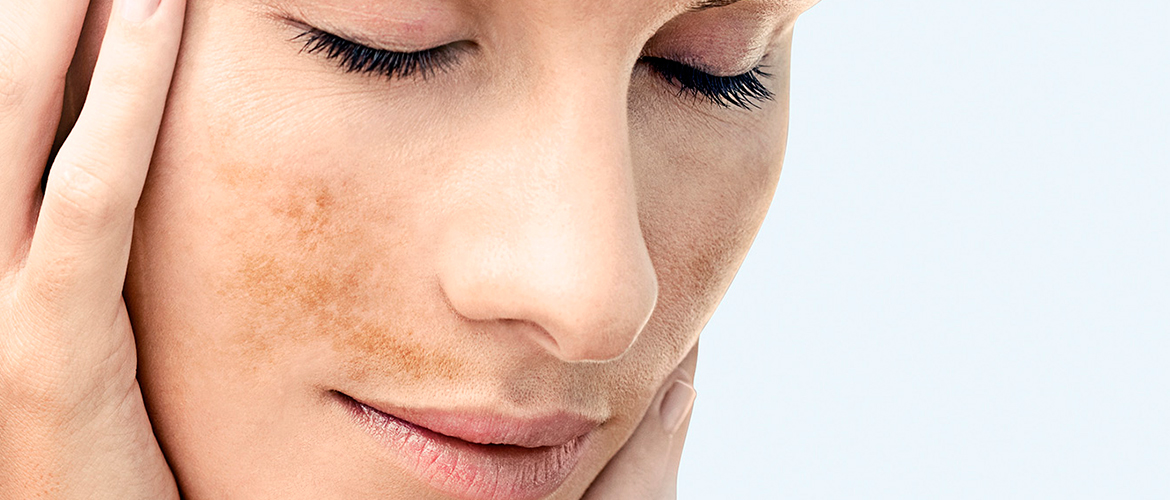 Such hair loss after the birth of a child is normal and according to the European Association of Dermatology, treatment with special shampoos or other preparations during this period is not effective.
Such hair loss after the birth of a child is normal and according to the European Association of Dermatology, treatment with special shampoos or other preparations during this period is not effective.
It is very important to tell the doctor about any changes in the skin during pregnancy and not to self-medicate, because in addition to the usual and expected changes in the skin during pregnancy, a rash can be a manifestation of dangerous diseases for mother and child (syphilis, rubella, chickenpox , genital, herpes simplex and herpes zoster).
Khramtsova Yu.S.
Pigmentation during pregnancy: how to get rid of it - Parents.ru
Pregnancy
- Photo
- DiMedia/Shutterstock
Pigmentation is the darkening or, conversely, lightening of skin areas, which occurs due to failures in the production of melanin, the pigment responsible for the color of the skin.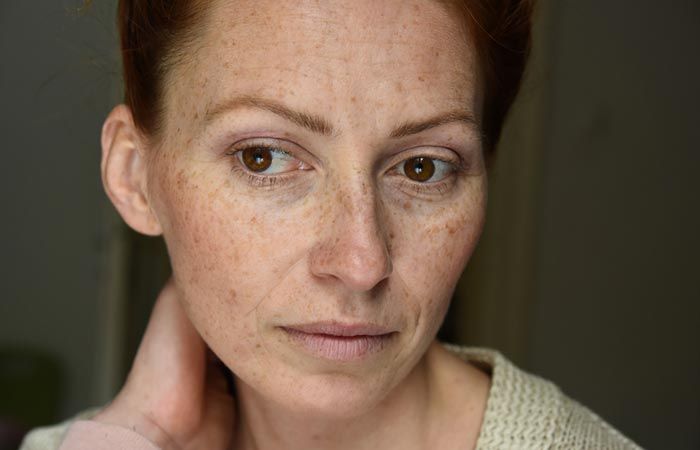 The appearance of such signs suggests that a woman is pregnant. Whether the spots appear dark or light, depends on the original skin color. Such marks, characterized by clear edges and irregular shape, are called melasma or chloasma by doctors.
The appearance of such signs suggests that a woman is pregnant. Whether the spots appear dark or light, depends on the original skin color. Such marks, characterized by clear edges and irregular shape, are called melasma or chloasma by doctors.
During pregnancy, they can appear both on the face (on the forehead, chin, around the eyes, on the upper part of the cheeks, on the upper lip), and on other parts of the body: on the inside of the thighs, areolas of the mammary glands, on the abdomen.
"Pregnancy mask" on the face: what is it
In some areas, the skin begins to darken in the very early stages of pregnancy. Sometimes the manifestation of this particular symptom prompts a woman to think about pregnancy. First, the nipples and areolas around them, the area of the labia and the clitoris darken.
In the second trimester, pigmentation becomes brighter and some expectant mothers get the so-called “pregnancy mask” - pigmentation occurs on the face during pregnancy. The spots appear on the cheeks, on the nose, on the forehead, cheekbones, under the eyes, above the upper lip and on the chin and can be arranged symmetrically. If a woman is prone to the appearance of freckles, then you need to be prepared for the fact that during the bearing of the baby they will become brighter, and their number will increase.
The spots appear on the cheeks, on the nose, on the forehead, cheekbones, under the eyes, above the upper lip and on the chin and can be arranged symmetrically. If a woman is prone to the appearance of freckles, then you need to be prepared for the fact that during the bearing of the baby they will become brighter, and their number will increase.
Pigmentation during pregnancy on the abdomen appears at about the same time. This brown stripe, which stretches from the navel to the pubis, the so-called Alba stripe, exists in every woman, it just becomes more noticeable during the bearing of the baby.
Why pigmentation occurs
Human skin color depends on many circumstances, but the most important is the concentration of coloring substances, or pigments, one of which is melanin. It accumulates in special molecules called "melanosomes", which act as a natural filter that protects the top layer of the skin from the harmful effects of ultraviolet rays.
During pregnancy, the production of melanin changes, because the adrenal glands begin to synthesize more estrogens, progesterone and melanocyte-stimulating hormone. Because of this, more melanin is released, which is concentrated in certain areas of the skin. As a result, the woman develops hyperpigmentation.
Because of this, more melanin is released, which is concentrated in certain areas of the skin. As a result, the woman develops hyperpigmentation.
Occasionally, chloasma is caused by oral contraceptives taken before pregnancy or a lack of folic acid. Pigmentation can also indicate problems in the functioning of the liver, pituitary gland, ovaries, incorrect cosmetic procedures, the use of low-quality cosmetics or perfumes. Stress also plays an important role in the appearance of spots on the skin.
Genetics also matter. If a mother had such a problem during pregnancy, then it is possible that age spots during the period of bearing a baby will appear in her daughter.
Expectant mothers often ask how pregnancy pigmentation affects the baby. If its cause is not an exacerbation of chronic ailments, then age spots will not have any effect on the unborn child.
- Photo
- Konstantin Aksenov/Shutterstock
Age spots during pregnancy: a boy or a girl?
There is a popular belief that age spots during pregnancy appear more often in expectant mothers of girls.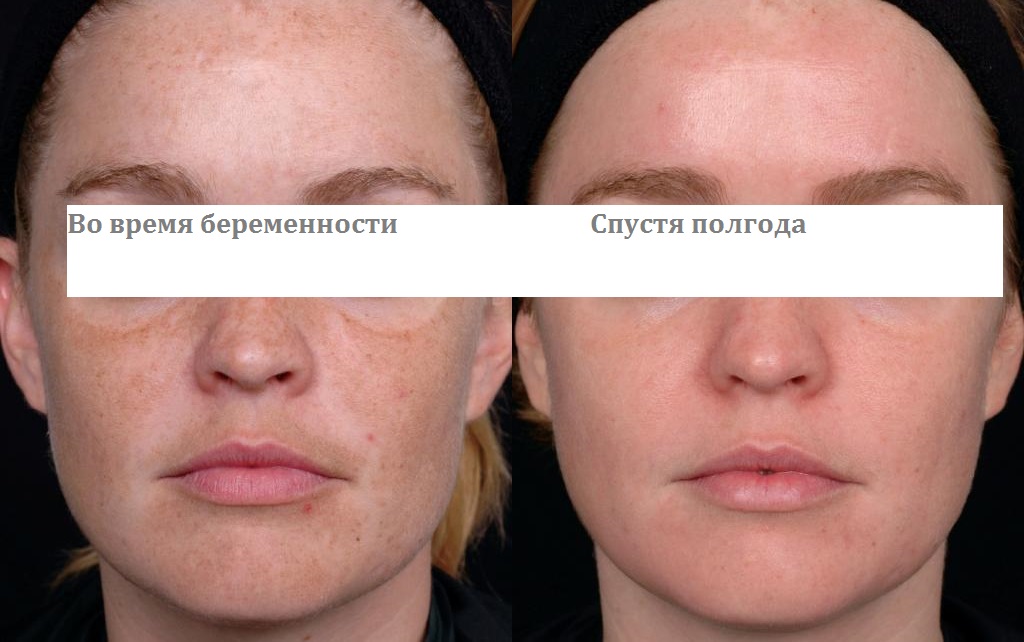 This is justified: a girl developing in her stomach takes estrogens from her future mother, and their level in the woman's body decreases. But how then to explain that age spots appear in expectant mothers of boys? In a word, than to guess according to folk signs, it is better to do an ultrasound. It definitely won't go wrong.
This is justified: a girl developing in her stomach takes estrogens from her future mother, and their level in the woman's body decreases. But how then to explain that age spots appear in expectant mothers of boys? In a word, than to guess according to folk signs, it is better to do an ultrasound. It definitely won't go wrong.
How to reduce the risk of age spots
Age spots are a temporary phenomenon, but not so pleasant. What rules should the expectant mother follow in order to reduce the likelihood of their occurrence?
-
Since pigmentation becomes more noticeable under the influence of ultraviolet rays, protect the skin from the sun: in summer, wear wide-brimmed hats, sunglasses, use sunscreen intended for children;
-
Carefully read the ingredients list of cosmetic products and choose those that do not contain vitamin A, which stimulates the formation of age spots: : green leafy vegetables, cabbage, quality vegetable oil, cereals, fish, liver and beets;
-
But fatty foods are best avoided, because they make the liver work in an enhanced mode, and this threatens with hyperpigmentation.

-
Do not disregard the recommendation of the gynecologist to visit an endocrinologist. This is necessary to check the functioning of the thyroid gland.
Will we be treated?
Many experts believe that during pregnancy you should not take any drastic measures to combat hyperpigmentation, and advise you to calmly wait until it disappears by itself some time after childbirth. But among the doctors there are those who do not mind the use of traditional medicine. In that case , the expectant mother should understand that it is unlikely that it will be possible to completely get rid of this problem during the bearing of the baby, the pigmentation will only become less noticeable. And most importantly, before using any remedy, you must always consult a doctor.
These tips, of course, do not apply to cases where chloasma is caused by an exacerbation of chronic diseases. If this is the reason, serious attention should be paid to the treatment of the disease and strictly follow the recommendations of the attending doctor.